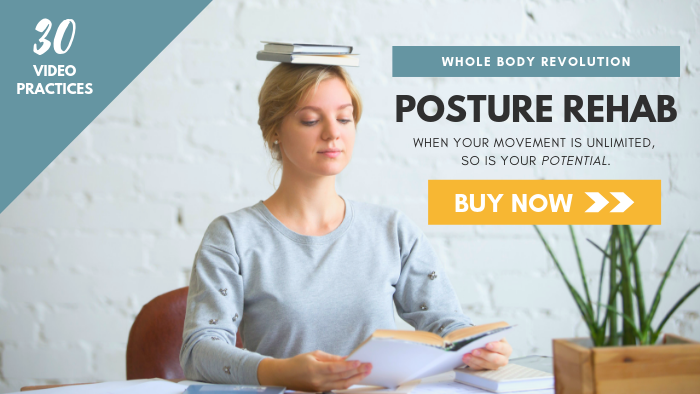 I know you’d like to improve your flexibility. I hear this from my clients all the time! So far, I’ve showed you how to increase your shoulder flexibility, how to use fruit to keep your muscles limber, and given you 7 strategies to increase your hip flexibility. But we haven’t yet talked about the physiology behind flexibility, and understanding how your muscles work is crucial to maintaining a healthy, limber body for the rest of your life.
I know you’d like to improve your flexibility. I hear this from my clients all the time! So far, I’ve showed you how to increase your shoulder flexibility, how to use fruit to keep your muscles limber, and given you 7 strategies to increase your hip flexibility. But we haven’t yet talked about the physiology behind flexibility, and understanding how your muscles work is crucial to maintaining a healthy, limber body for the rest of your life.
Most of my clients are making the same mistake when it comes to increasing flexibility. They diligently attend yoga classes, do pre- and post-work out stretching routines, and even get plenty of massages. They just don’t understand why they’re not seeing results! It seems like they might make a few initial gains, but after a couple of weeks the body just plateaus and they don’t experience any additional flexibility.
Well, here’s the reality: It’s not the length of your muscles that determines how far you can stretch. In reality, you’re just as flexible as the yogi who can tuck his foot behind his head.
Impossible! you say. I know it might seem that way, but consider this: A 70 year-old man whose muscles are so tight and restricted he can barely bend his legs to walk up the stairs goes into the hospital for surgery. This is a man who can’t even touch his toes! The nurses put him under anesthesia in preparation for the surgery. Now they have to be extremely careful moving this man because his muscles and joints are so loose they can easily dislocate something!
Fast forward to post surgery when the anesthesia wears off and the man wakes up…he’s back to his original range of motion. What the heck happened?!
Clearly it’s not the physical restriction of the muscle that’s preventing this man from tucking his leg behind his head – the nurses could have easily manipulated him into this position under the extreme relaxation of anesthesia.
So, why is he so immobilized?
The truth is, it’s his neurological make-up that is keeping his muscles tight and tense. You see, every muscle has a “set point,” a point at which little tiny sensors in the cells send a message to the brain insisting that if the muscle is extended any further, it will tear. This is called the “stretch reflex,” and it initiates a contraction in the muscles.
That’s where you experience the limit of your flexibility. Simply pulling on your muscles is inefficient for increasing flexibility unless you plan to stay there long enough to override the power of your stretch reflex – way too long for most people’s patience.
Instead, you have to reprogram your nervous system into allowing your muscle to stretch a little further. Strength plays a part in this. If your muscle is weak, your nervous system will protect it by not allowing it a very large range of motion. Strengthening your muscles in their FULL range of motion is crucial to healthy flexibility.
If you’re unsure of how to start reprogramming your neurological wiring, start by simply taking the muscles and joints through a full range of motion several times. For example, if your ankles have limited range of motion, balance yourself against a wall or chair and hold your foot in front of you. Point your toes toward the ground and then lift them toward the sky, repeating 7-10 times in each direction.
This takes all the muscles along the front and back of your lower leg through a full range of motion and sends a signal to your brain that you need to be able to use your foot this way. With repetition, you’ll notice more freedom in your ankle joint (if done daily, you should notice a difference within seven to ten days). It also retrains muscles that may have become “frozen” in a shortened position.
Ida P. Rolf – founder of the Rolf Method of Structural Integration – always said, “When flexors flex, extensors extend.” This means that when you contract muscles on one side of a joint, the muscles on the other side need to lengthen. Repeated mobility exercises train your body to move in this healthy manner.
The same strategy can be applied to any area of your body that you would like to see increased mobility and flexibility. Move only one joint at a time to start.
